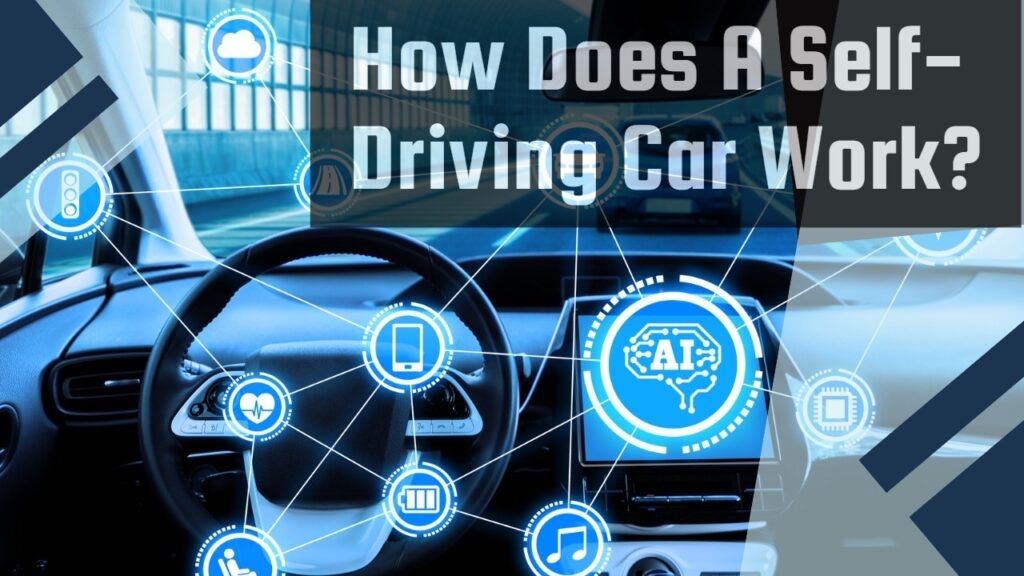Autonomous cars, also known as self-driving cars, are the future of personal transportation. These cars are designed to navigate the environment without any assistance from the driver, and can even operate without a human inside the car.
While there have been significant advancements in this field, fully autonomous cars are still in development. However, some production cars, such as the Tesla Model S with Tesla AutoPilot, have achieved Level 2 autonomous driving.

The Society of Automotive Engineers (SAE) has established six levels of automation for vehicles. These levels range from Level 0, which has no automation, to Level 5, which has complete automation without the need for human attention. This means that at Level 5, a vehicle can operate entirely on its own without any human intervention.
Table of Contents
What is a Self-Driving Car?
Self-driving cars, also known as autonomous vehicles, have rapidly evolved from a futuristic concept to a reality on our roads. These cutting-edge machines are transforming the way we think about transportation and hold the potential to revolutionize the automotive industry.
In the realm of automotive innovation, the distinction between self-driving and autonomous cars can be perplexing. While self-driving cars possess the capability to navigate most scenarios independently, they necessitate human intervention when the need arises. On the other hand, fully autonomous cars operate seamlessly without any human involvement.
Nonetheless, the realm of vehicular safety has experienced remarkable advancements over time, employing an array of cutting-edge sensors, cameras, and radars strategically positioned around the vehicle to meticulously monitor its surroundings. Notably, once exclusive to luxury models, features like automatic emergency braking, adaptive cruise control, and blind-spot detection have permeated the entry-level segment. These remarkable attributes can be classified as partially autonomous, as they empower the vehicle to remain within its designated lane and adjust speed in accordance with the flow of traffic.
When examining the intricacies of self-driving and autonomous cars, one encounters a complex distinction. Self-driving vehicles possess the remarkable capability to function independently in the majority of circumstances, yet they rely on human intervention in critical situations. In stark contrast, fully autonomous cars operate seamlessly, bereft of any human interference.
Automotive safety has come a long way with the introduction of advanced technology. The inclusion of LiDAR, sensors, radars, cameras, and other monitoring devices around the vehicle has greatly improved safety measures. These devices are strategically placed to ensure that the vehicle is constantly being monitored and can detect potential hazards in its surroundings.
In recent times, basic offerings have been equipped with advanced features that were previously exclusive to higher-end models. These features include but are not limited to automatic emergency braking, adaptive cruise control, and blind-spot detection. These features can be categorized as partially autonomous, as they enable the vehicle to maintain its lane and adjust speed in accordance with traffic.
Perception: The Senses of an Autonomous Vehicle
Similar to humans, self-driving cars rely on a myriad of sensors to perceive and understand their surroundings. These sensors serve as the eyes and ears of the vehicle, providing crucial data for decision-making. Let’s take a closer look at some of the key perception technologies employed by autonomous vehicles:
- LiDAR (Light Detection and Ranging): LiDAR sensors emit laser beams and measure the time it takes for the light to bounce back, creating a detailed 3D map of the environment. This technology allows the car to detect and identify objects, pedestrians, and other vehicles with remarkable precision.
- Radar (Radio Detection and Ranging): Radar sensors use radio waves to determine the distance, speed, and direction of objects in the car’s vicinity. This helps the vehicle maintain a safe distance from obstacles and enables adaptive cruise control functionality.
- Cameras: Equipped with advanced image recognition algorithms, cameras capture and analyze visual information from the surroundings. They play a vital role in recognizing traffic signs, lane markings, and objects, allowing the self-driving car to make informed decisions.
- Ultrasonic Sensors: Ultrasonic sensors use sound waves to measure distances and detect objects in close proximity to the vehicle. They are particularly useful for parking assistance and detecting potential collisions during low-speed maneuvers.
By combining data from these sensors, the self-driving car creates a comprehensive understanding of its environment, enabling it to navigate roads with an unprecedented level of awareness.
Decision-Making: The Brain of an Autonomous Vehicle
Once the self-driving car has gathered a wealth of data through its perception sensors, it must process this information and make decisions in real time. This complex task is accomplished through a combination of artificial intelligence (AI) and machine learning algorithms. Here’s how it works:
- Sensor Fusion: The data collected from various sensors are fused together to create a unified representation of the environment. This integration of information allows the car to form a more accurate understanding of its surroundings.
- Mapping and Localization: Self-driving cars rely on high-definition maps to understand their position and navigate routes. By comparing sensor data with pre-existing maps, the vehicle can determine its location with precision.
- Path Planning: Once the car knows its location, it uses algorithms to determine the best possible route to the destination. These algorithms consider various factors, such as traffic conditions, speed limits, and the presence of obstacles.
- Control Systems: The control systems of the self-driving car are responsible for executing the planned path. They send signals to the vehicle’s steering, braking, and acceleration systems to navigate the route effectively.
It’s important to note that the decision-making process is iterative and continuously updated based on new sensor inputs. This adaptability ensures that the self-driving car can respond to dynamic road conditions and make real-time adjustments when necessary.
Safety and Redundancy: Mitigating Risks in Autonomous Driving
Safety is of paramount importance in autonomous driving. Self-driving car manufacturers employ several strategies to ensure the highest level of safety on the road:
- Redundancy: Critical systems, such as sensors and computers, are often duplicated to provide redundancy. This redundancy ensures that even if one system fails, there is a backup to maintain the car’s functionality and safety.
- Fail-Safe Mechanisms: Autonomous vehicles are equipped with fail-safe mechanisms that can bring the car to a safe stop in the event of a critical failure or an unpredictable situation. These mechanisms are designed to prioritize passenger safety above all else.
- Cybersecurity: With the increasing connectivity of self-driving cars, cybersecurity becomes a vital aspect. Manufacturers implement robust security measures to protect the vehicle from unauthorized access or potential hacking attempts.
The Future of Self-Driving Cars
Self-driving cars have the potential to revolutionize transportation, improving road safety, reducing congestion, and enhancing overall efficiency. As technology continues to advance, we can expect further advancements in autonomous driving, including:
- Level 4 and Level 5 Autonomy: Currently, most self-driving cars operate at Level 2 or Level 3 autonomy, requiring human supervision. However, the industry aims to achieve higher levels of autonomy, where human intervention is minimal or nonexistent.
- V2X Communication: Vehicle-to-everything (V2X) communication enables vehicles to exchange information with other vehicles, infrastructure, and pedestrians. This technology enhances safety and efficiency by providing real-time data and warnings to all parties involved.
- Artificial Intelligence Advancements: AI algorithms will continue to improve, enabling self-driving cars to handle complex scenarios and make even better decisions. The continuous learning capabilities of AI will enhance the overall performance and reliability of autonomous vehicles.
Self-driving cars rely on a sophisticated combination of perception sensors, AI algorithms, and decision-making processes to navigate our roads autonomously. With ongoing technological advancements and a strong emphasis on safety, the future of autonomous driving holds great promise for transforming the way we travel and interact with our environment.


